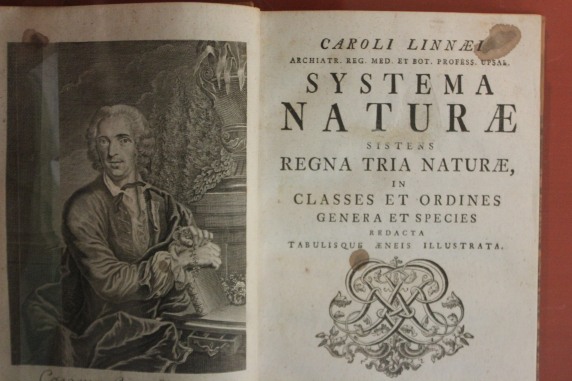
Being in Sweden now, I’m not getting much blogging done because there are Things To See. One of them, especially if you take an interest in plants, is the house of Carl Linnaeus in Uppsala. Houses, in fact, as he also had a summer residence not far away. Linnaeus established a binary system for classifying plants according to the number and arrangement of their stamens and pistils, and he described the sexual life of plants with some delectation. “The actual petals of a flower contribute nothing to generation, serving only as the bridal bed which the great Creator has so gloriously prepared, adorned with such precious bedcurtains, and perfumed with so many sweet scents, in order that the bridegroom and bride may therein celebrate their nuptials with the greater solemnity.”
Tame stuff, you might think, but it was all too much for some of his contemporaries. The Reverend Samuel Goodenough found that he needed to tell us that “to tell you that nothing could equal the gross prurience of Linnaeus’s mind is perfectly needless.” When Linnaeus pointed out that pollen from several male plants could impregnate one female plant, Johann Siegesbeck retorted that such “loathsome harlotry would not be permitted in the vegetable kingdom by the Creator.” Linnaeus promptly gave the name Siegesbeckia to a particularly ugly, foul-smelling weed.
Linnaeus’s system of nomenclature is still largely with us. “If you do not know the names of things, the knowledge of them is lost too,” he wrote in Philosophia Botanica (1751). Of course, that presupposes that unlike me, you have some knowledge to lose in the first place, as opposed to vast ignorance. So in place of a botanical treatise, all I can offer you here are a few pictures (PG rated). I’m afraid I didn’t write down the names. I call them flowers.
Haha! I wonder what Linnaeus would have said if he’d known bees can see identifying patterns on flower petals because they can see ultraviolet light. (http://www.beeculture.com/bees-see-matters/) But then, anthropomorphization has been a human creative pursuit for thousands of years, hasn’t it?
Your flower photos are lovely, Curtis.
Ah, I didn’t know that about bees. Did a Linnaeus Bee help to classify the patterns, I wonder? Thanks for the comment about the photos – some are ok but I still haven’t really mastered the technique.
If a Linnaeus Bee helped to classify petal patterns, it seems Linnaeus didn’t hold a high enough security clearance to be privy to such classified information. Maybe the bees reasoned his mind was too often in the gutter. 😉
🤣🤣🤣
Hi Curtis … must be amazing to explore – would love to visit sometime … I find Linnaeus’ classification system fascinating … and seeing his museum etc must be totally fascinating. Your flowers (his perhaps!). Four of them I have knowledge of … but the names have escaped me – but just enjoy your time … cheers Hilary
Thanks, Hilary. I’m afraid I’m woefully ignorant about plants but that doesn’t stop me enjoying them.
LOL at Linnaeus’s revenge on Siegesbeck 😀 Nice pix too.
While there was indeed a good deal of prurience in the writings of Linnaeus and the early climbers aboard his train, Siegesbeck’s insistence that the natural world should fit his preconceptions was much worse. That weed had grounds to sue Linnaeus for libel.
Ha, ha – yes, it was pretty unfair on the weed, indeed.
Comments are closed.